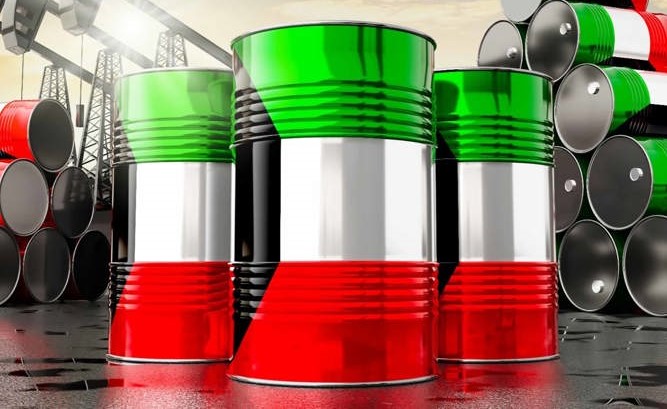
-
Crude oil prices drop below the $80 per barrel mark after experiencing increased volatility in recent weeks, influenced by factors affecting both supply and demand.
-
Escalating geopolitical risks in the Middle East, along with an attack on crude oil shipments in the Red Sea, boosted oil prices.
A KAMCO Invest report indicated that crude oil prices saw a slight rise in July 2024. The average price of Brent crude oil spot contracts increased by 3.5% to $85.30 per barrel, up from $82.40 in June 2024.
Meanwhile, the OPEC reference basket price rose by 1.5% to $84.40 per barrel, and Kuwait Export Crude increased by 1% to an average of $85.70 per barrel in July 2024, according to Al Anba newspaper.
Crude oil has been trading in a limited range below $80 per barrel in recent weeks amid sharp fluctuations. Brent crude futures saw gains in the last two trading sessions of the week but ended lower due to demand pressures overshadowing geopolitical concerns and escalating tensions in major oil-producing regions.
Recent gains were driven by hopes for a soft landing of the US economy following comments from the Federal Reserve and economists suggesting a possible rate cut at its September 2024 meeting. However, markets have erased most of their gains since the beginning of the year due to weaker Chinese demand and recent data indicating ongoing economic struggles.
The KAMCO report noted that crude oil prices fell below the $80 per barrel mark after experiencing increased volatility in recent weeks, influenced by factors affecting both supply and demand.
Escalating geopolitical risks in the Middle East, along with an attack on crude oil shipments in the Red Sea, boosted oil prices. Additionally, the intensification of the war between Russia and Ukraine also supported prices over the past few weeks.
Conversely, increasing indications that the U.S. Federal Reserve may cut interest rates next month have bolstered expectations for oil demand growth, contributing to the rise in prices. However, concerns about demand growth in China have had the opposite effect on prices.
On the demand side, global concerns persist as several economies, including the US, warn of an impending slowdown. While the expected interest rate cut might ease some of these concerns and support crude oil demand, weaker demand after the US summer season and warmer weather in the last quarter could offset much of the positive impact on oil prices.
Additionally, China continues to face uncertainty regarding oil demand, with refineries reducing production due to weak demand.















